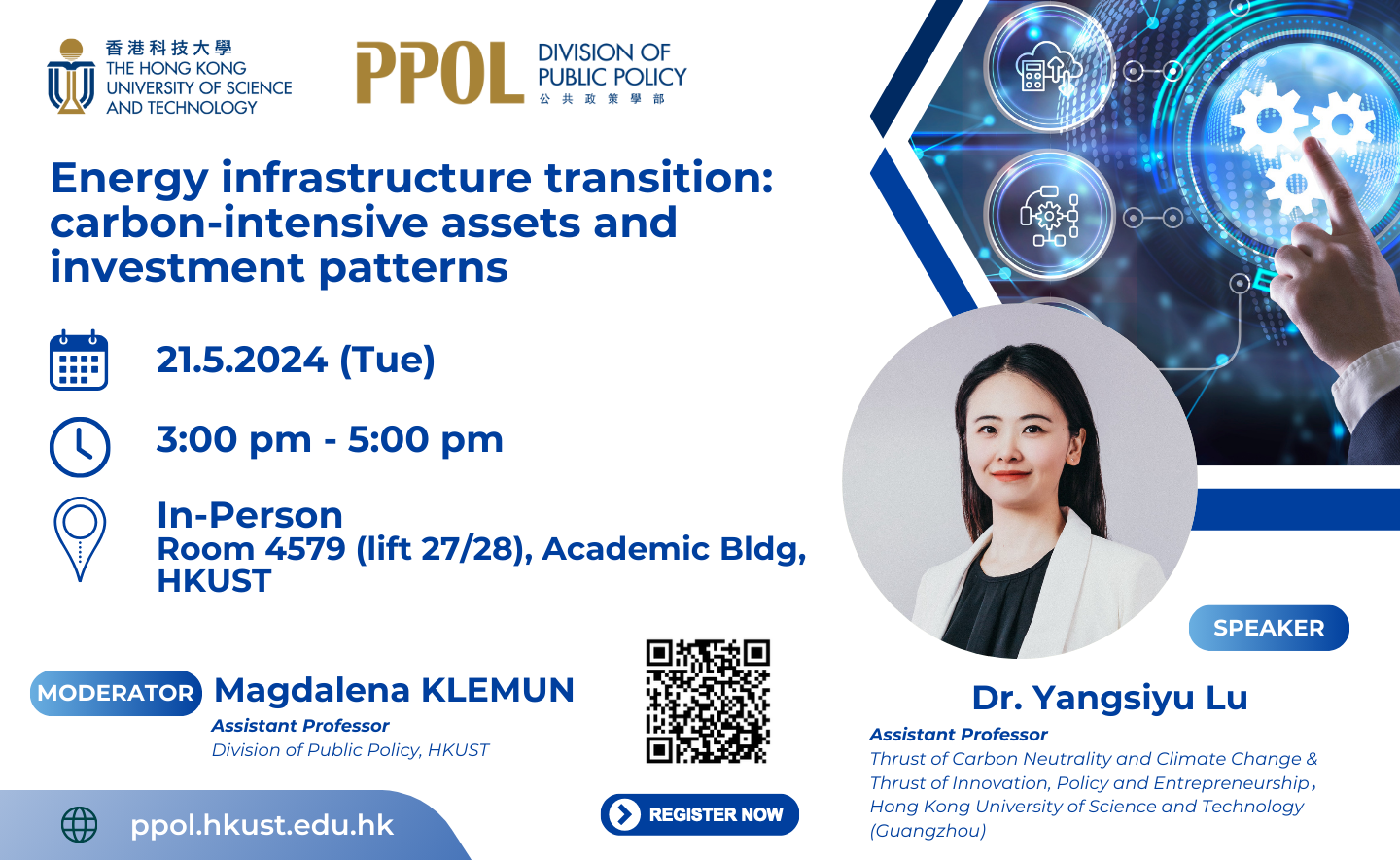
Abstract:
The transition of energy infrastructure is crucial to achieve the carbon neutrality goal. This talk will focus on global fossil fuel power plants and leverage examples of Chinese overseas energy investments. By analysing the role of clean technology in mitigating the risk of stranded power assets and exploring the impact of cofinancing on infrastructure projects, this talk will discuss how to use clean technology to achieve a 'soft landing’ for carbon-heavy assets and strengthen the collaboration among energy financiers to achieve sustainable development of energy infrastructure.
Yangsiyu Lu is an assistant professor at the Carbon Neutrality and Climate Change Thrust and the Innovation, Policy, and Entrepreneurship Thrust at Hong Kong University of Science and Technology (Guangzhou). Her research focuses on cleantech innovation, energy finance, and climate policy. She holds a PhD degree in Environmental Economics from the University of Oxford, a master's degree in Energy and Environment from IMT Mines Albi (France), and a master's and bachelor's degree in Environmental Science and Engineering from Shanghai Jiao Tong University. Before joining HKUST(GZ), she worked as a research fellow at Paris School of Economics and Boston University’s Global Development Policy Center.

The transition of energy infrastructure is crucial to achieve the carbon neutrality goal. This talk will focus on global fossil fuel power plants and leverage examples of Chinese overseas energy investments. By analysing the role of clean technology in mitigating the risk of stranded power assets and exploring the impact of cofinancing on infrastructure projects, this talk will discuss how to use clean technology to achieve a 'soft landing’ for carbon-heavy assets and strengthen the collaboration among energy financiers to achieve sustainable development of energy infrastructure.
